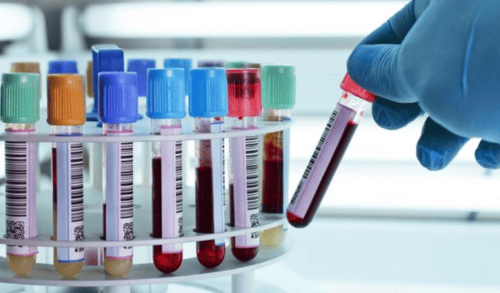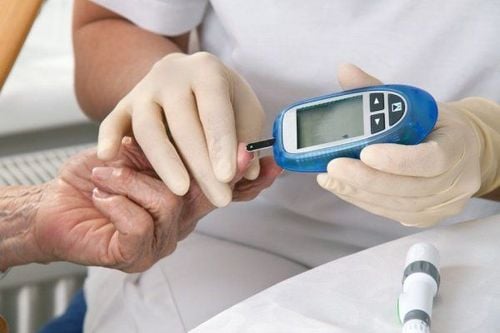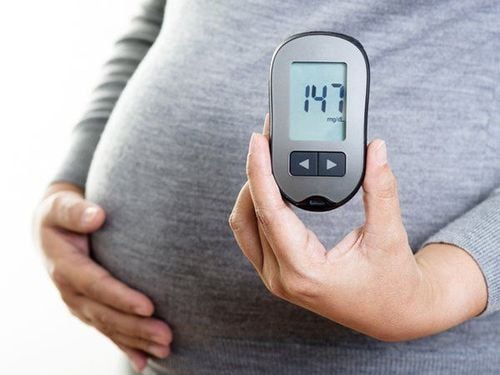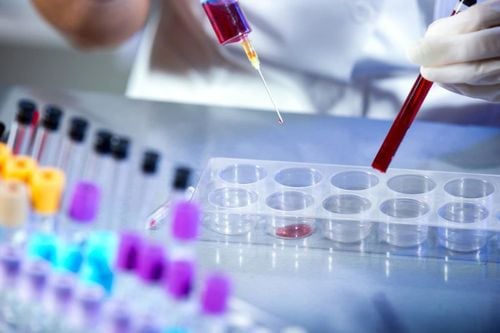This is an automatically translated article.
Pre-diabetes is a common disease in modern life, due to the amount of glucose in the blood exceeding the prescribed threshold. Testing for prediabetes is the most effective way to detect the disease. So when should you get tested for prediabetes?
1. What is pre-diabetes?
Prediabetes is impaired fasting glucose or impaired glucose tolerance. People with prediabetes have blood sugar levels that are higher than normal but not high enough to be diagnosed with diabetes. In other words, prediabetes is a warning level, a sign that a person is at risk of type 2 diabetes.
Normal fasting blood sugar is between 70-100 mg/dL. The fasting blood sugar of a person with prediabetes is between 100 and 125 mg/dL. The fasting blood sugar of a person with diabetes is above 126 mg/dL. If people with pre-diabetes do not control blood sugar levels, causing blood glucose to continue to rise, it can lead to type 2 diabetes, which adversely affects health.
2. When to test for prediabetes?
Pre-diabetes has no obvious symptoms. Therefore, it is often difficult for patients to detect abnormal signs to actively test for pre-diabetes. Most confirmed cases of prediabetes are diagnosed incidentally during a routine physical exam or blood test.

Tiền đái tháo đường được xác định thông qua thử máu, kiểm tra lượng đường trong máu khi đói
People who are at risk for type 2 diabetes are more likely to develop prediabetes. Including:
People who are overweight, obese People who are physically sedentary People over 50 years of age Family with a history of type 2 diabetes Women who have ever had gestational diabetes If you fall into one of the above categories and If you have symptoms such as drowsiness, fatigue, weight gain around the abdomen, you should have a blood test to determine if you have pre-diabetes.
Prediabetes is diagnosed when one of the following disorders is present:
- Impaired fasting glucose (IFG): Fasting plasma glucose from 100 (5.6mmol/L) to 125 mg /dL (6.9 mmol/L), or
- Impaired glucose tolerance (IGT): Plasma glucose at 2 hours after oral glucose tolerance test 75 g from 140 (7.8 mmol/L) to 199 mg/dL (11 mmol/L), or
- HbA1c from 5.7% (39 mmol/mol) to 6.4% (47 mmol/mol).
These conditions of blood glucose disturbance do not meet the criteria for diabetes but still carry the risk of developing diabetes, which is called pre-diabetes.
3. Is pre-diabetes curable?
Pre-diabetes can be treated with two measures to lose weight and increase movement and exercise. Losing 10% of your weight and exercising regularly 3-4 days a week, 30 minutes a day will help stabilize blood glucose levels.
Not only can pre-diabetes be treated, but these two measures also help improve health, improve blood pressure, bone and joint problems...
Pre-diabetes turns into type 2 diabetes It will be very difficult to treat completely, patients in addition to lifestyle changes and healthy eating also need the support of drugs.
4. What should people with pre-diabetes eat?

Người bị tiền đái tháo đường nên kiểm soát cân nặng bằng việc ăn nhiều chất xơ
People with pre-diabetes need to control their weight, so they should apply a scientific diet, increase fiber, limit sweets and fats.
Notes in the diet of people with pre-diabetes include:
Eat a lot of fiber: vegetables, fruits Should eat fish 2 times a week Eat lean meat with a moderate amount, enough to provide the right amount of food. Protein needed by the body. It is better to replace meat protein with plant-based protein. Limit fried foods, greasy foods Do not eat fast foods, high in fat Eat lots of salads or nuts Avoid refined carbohydrates Drink lots of filtered water or coconut water Limit Limit drinking juice, eat sweet fruits such as mango, durian... Limit alcohol, coffee, soft drinks. Currently, Vinmec International General Hospital has a Cardiovascular and Diabetes Screening package, which helps patients detect the disease promptly even when there are no symptoms, thereby taking appropriate treatment measures to protect their health. healthy yourself.
Please dial HOTLINE for more information or register for an appointment HERE. Download MyVinmec app to make appointments faster and to manage your bookings easily.













